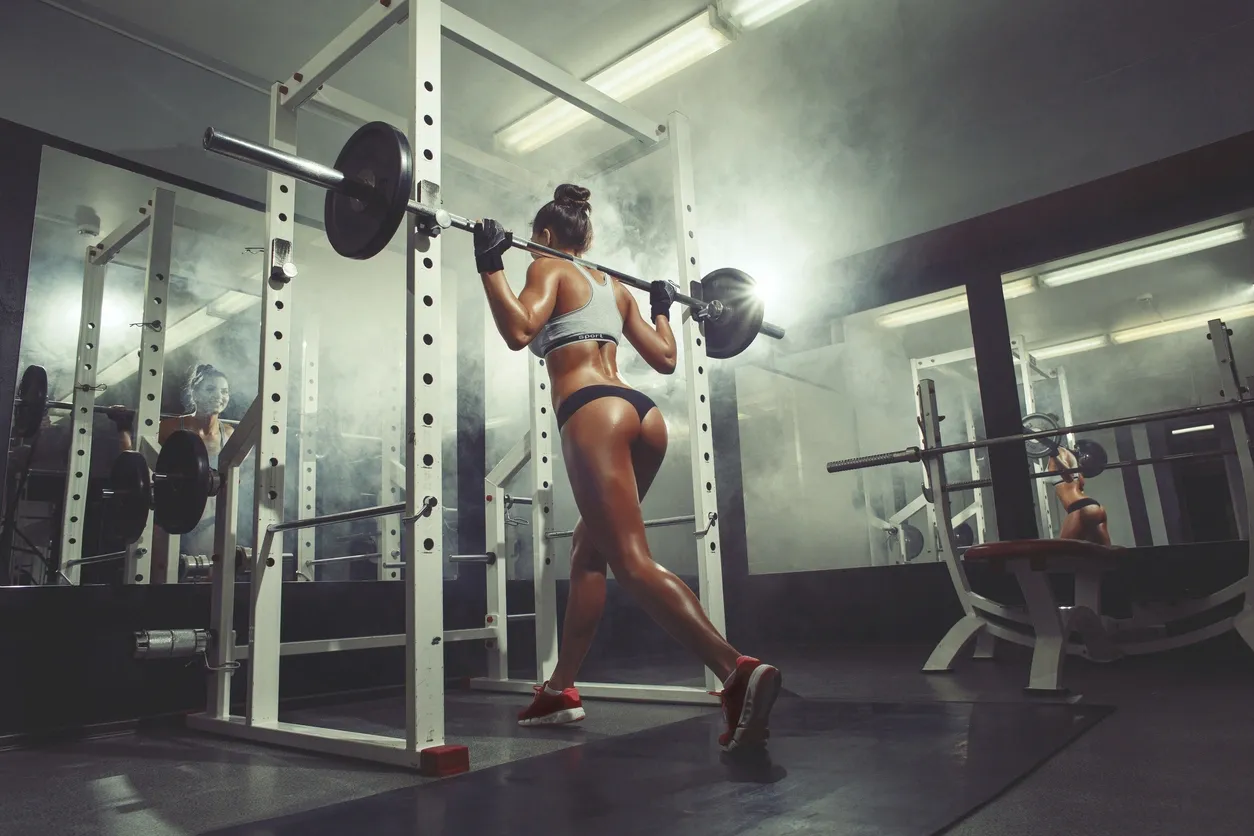
Squatting: Form and Technique
Squat
Purpose: Squatting is one of the most functional exercises a person can complete. We perform variations of the squatting movement when we sit in a chair or go to the bathroom. As you can see, squatting is vitally important! Learning how to squat properly is pivotal for healthy movement patterns. This post is designed to address some common squatting issues and how to correct them.
Muscles Involved: Squatting is a whole body exercise, but the main muscle groups targeted are the glutes and quads. The primary stabilizers are the core and hip stabilizers.
Technique: Keeping a neutral spine and chest up, sit the hips back and then control the drop down. Goal is to get to or just below 90 degrees of hip flexion. Feet should start a comfortable width apart (about shoulder width). Toes should be slightly rotated out about 5-15 degrees. Core should be engaged the entire time. Inhale on the way down, and exhale on the way up!
Tips:
- Before you squat, a warmup is necessary to get your muscles engaged and your joints lubricated. The best warmups increase your body temperature while also going through light resistive or bodyweight movements of the muscle groups that are going to be used.
- Use a front rack hold, or hold your weight anteriorly (e.g. at the chest) to increase posterior chain engagement and take pressure off of yours knees.
Common Errors:
- Knee collapse on descent or ascent from squat
- Tip: Try using a theraband around your knees to increase hip abduction with movement. Knee collapse is indicative of hip abductor weakness or poor hip abduction activation.
- Heels lifting off ground when squatting
- Tip: Focus on tripod foot position. Your foot should have three points of contact throughout your squat: heel, medial ball of foot, and lateral ball of foot. This error could be related to ankle stiffness, knees driving forward too early or lack of hip mobility.
- Chest drop with squat
- Tip: Focus on standing up with a tall chest. Hips and chest should raise at the same rate. Chest drop with squat often comes when hips rise faster than chest. Another common impairment leading to chest drop is trying to get depth in squat by getting head closer to the ground and not hips. Practice squatting to a box or doing sit-to-stands from a box to train your squat depth while focusing on upright chest position.
Common Aches and Pains Caused by Squatting:
- Back pain: Dropping your chest when squatting puts increased tension on your low back. Tightness in the hips can lead to increased compensatory motion in the lumbar spine causing a butt wink at the end range of the squat.
- Hip/knee pain: The relationship between foot, ankle and hip is the glue that holds a squat together. A breakdown in foot, ankle or hip stability can cause undo loading to the hip flexor, lateral hip, patellar tendon, or IT band.
Types of Squats:
- Sit-to-stand: This is a great way to train your body. Sit in a controlled fashion onto a chair and stand back up!
- Wall slides: Use a wall to help maintain an upright chest and perform a squat.
- Mini squats: Use this to work into a full depth squat. Squat only a portion of the way down in order to focus on what you need to work on – balance, strength, form, etc.
- TRX assisted squats: By holding onto the TRX handles, you will increase quad engagement and your ability to sit back into the squat.
- Bodyweight squat: These allow you to focus on proper form before progressing to greater loads. You can increase difficulty by slowing the movement down or holding at the bottom of the squat.
- Weighted Squats: You can use anything from light dumbbells to a heavy barbell. Adding wait to your squat is great for neuro-recruitment, bone health and increasing strength.
- Single leg squats: You can squat on one leg to a surface such as a chair or free standing. These require exceptional balance, mobility and strength.
Tips to Address Pain:
- Change up the style of squat to switch where the loads are going through your joints
- Decrease the overall load by decreasing weight or decreasing repetitions
- Consult with a physical therapist for personalized solutions
Physical Therapy Interventions:
- A physical therapist is trained in rehabilitation and movement restoration. A PT will evaluate your movement patterns and perform specific special tests to isolate the reason for your individual movement abnormality or source of pain. Once isolated, the PT will design a specific program to improve your mobility and strength deficits.
- Physical therapists can facilitate increased motion with mobilizations to various joints while also freeing up soft tissue restrictions with myofascial release. Dry needling is another way a PT can reduce pain and increase range of motion and mobility. Other techniques are utilized to increase muscle activation and strengthen stabilizing muscles that are commonly overlooked at the gym.
- Physical therapists can also assess your training habits and make sure you are getting adequate rest and recovery between squat workouts to facilitate training adaptations versus pain and injury.
Follow us on:
- Instagram: @Dynamicptchicago
- Facebook: @DynamicPT-Chicago
Contact us to Schedule
- Email: info@dynamic-PT.com
- Phone: (312) 643-1555
- Text: (312) 7786455
